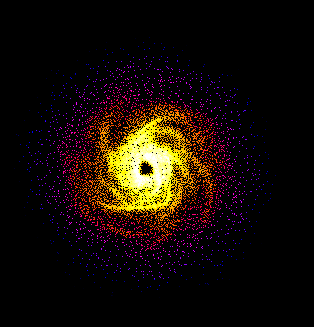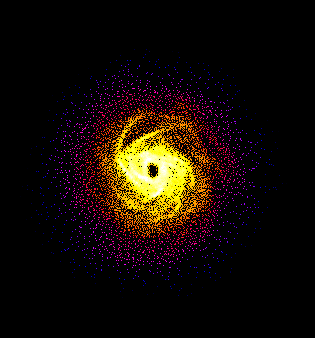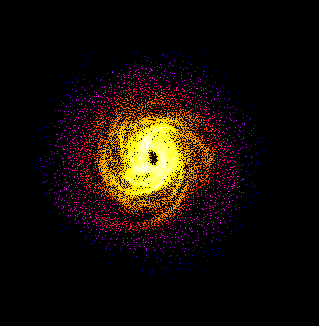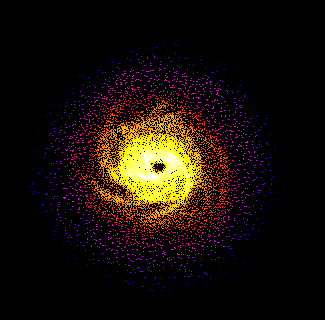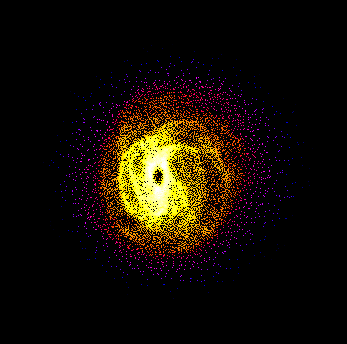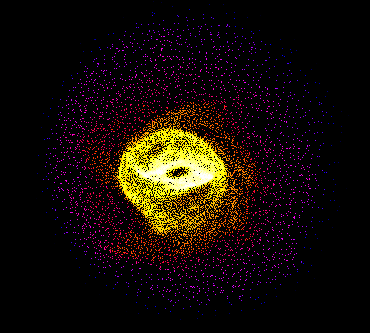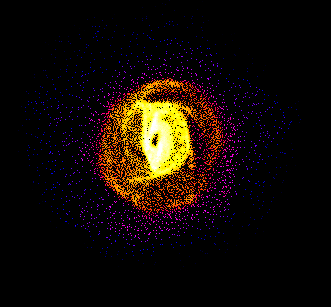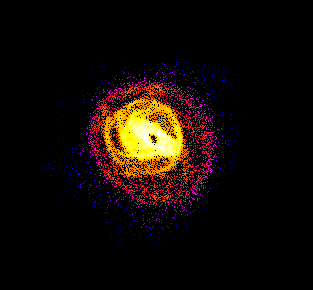Simulating Collisions of Galaxies
by Leslie Hebb, Philip Komljenovic, & Jorge Villa
 A disk galaxy after it has collided with another galaxy.
A disk galaxy after it has collided with another galaxy.
Galaxy Interactions within Clusters
In galaxy clusters, the high density and speed of the galaxies causes very interesting transformations over time.
Nearby Clusters (z=0)
90% of all galaxies within clusters are dwarf ellipticals. These dwarf ellipticals are low in luminosity and show a past history of multiple star bursts.
Intermediate Age Clusters (z=0.4)
90% of all galaxies are low luminosity bulgeless dwarf disk systems. They are primarily disturbed blue spirals that do not appear to have any galaxies nearby that could have caused the disturbance.
What could cause this extreme transformation of galaxy morphology in the short time span of 5 Gyr from a z=0 to a z=0.4?
Possible Scenarios
- Mergers
- Ram Pressure Stripping
- Tidal Forces from the cluster environment
None of these scenarios are likely. Mergers are too rare in the galaxy to cause the ubiquitous morphological transformations that are occurring, and ram pressure stripping and tidal cluster interactions are only effective at the very centers of clusters. There is also the theory of Galaxy Harassment.
Galaxy Simulations
We performed galactic collisions using an SPH code written by Neal Katz and
Lars Hernquist. Specifically, we simulated collisions between disk galaxies
and smaller spherical perturbers. The perturbers were modelled as
fixed potentials in space, while the disk galaxy was given an initial
velocity towards the perturber. Basically we modelled the interaction between
a disk galaxy and a fixed external potential.
Model Potentials for the perturbing galaxies
Back to Computing Our Universe 1999


